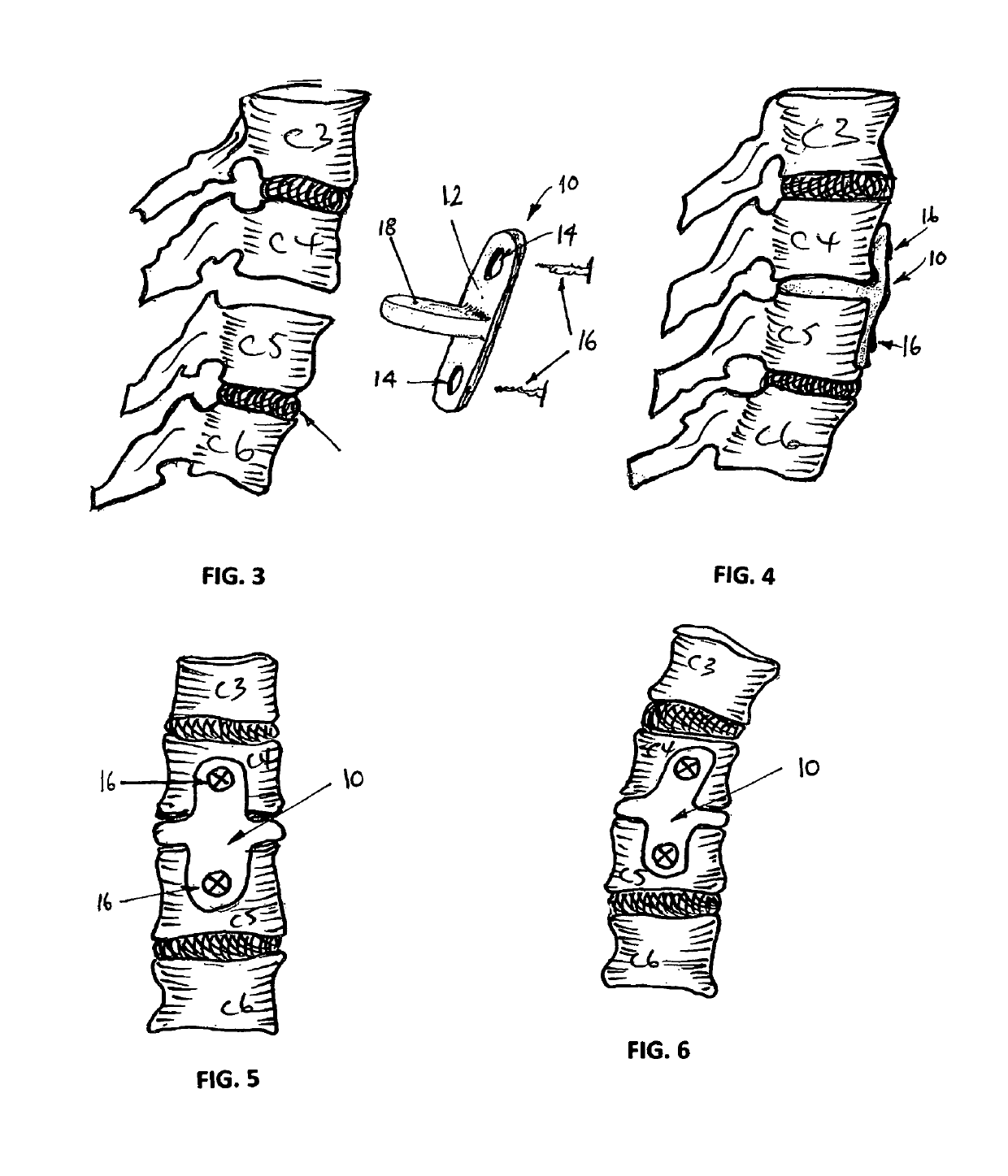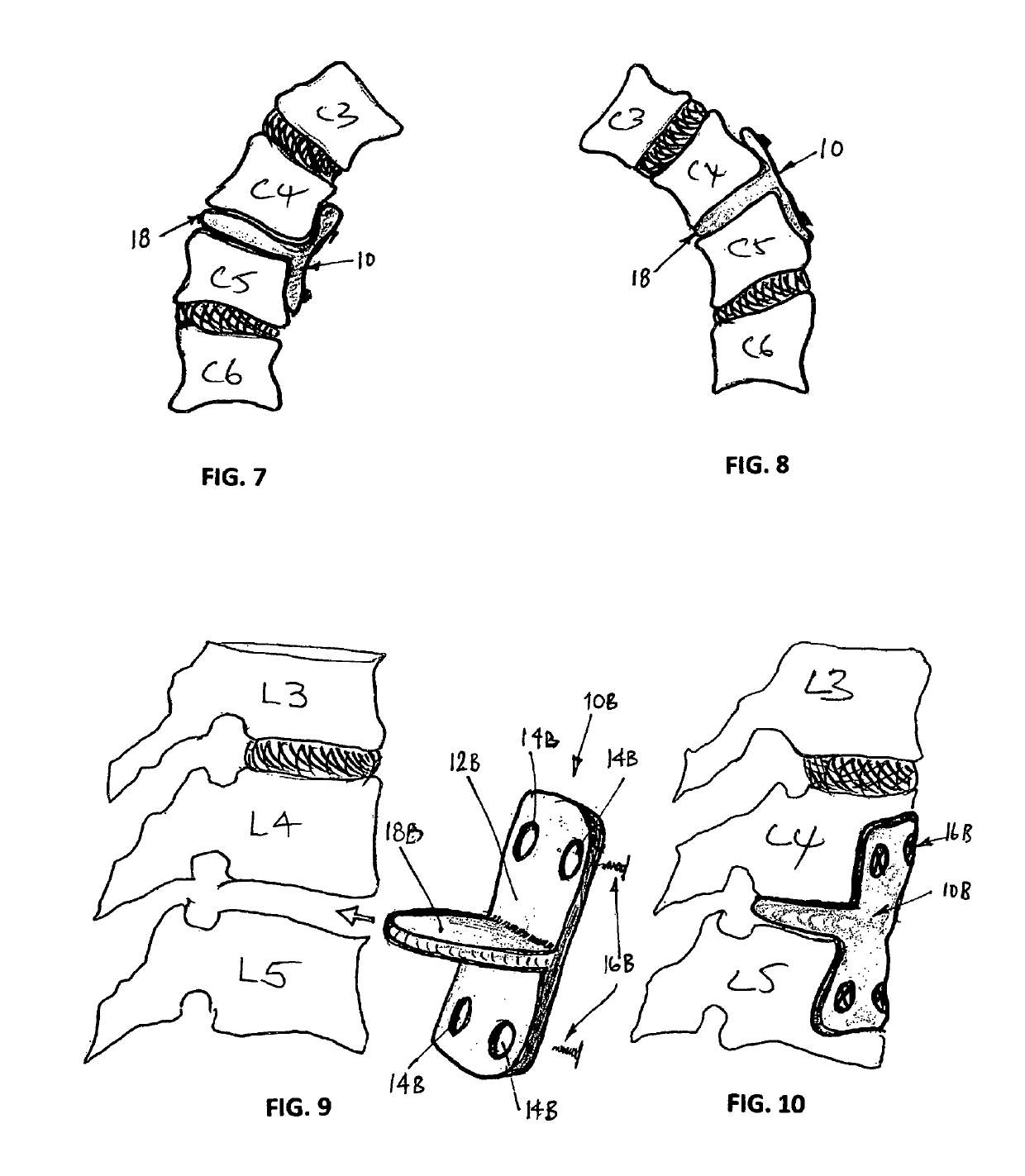Artificial intervertebral disc implant device
a technology of artificial intervertebral discs and implant devices, which is applied in the field of artificial intervertebral disc implant devices, can solve the problems of increased wear on the discs, inability to rotate at the treated intervertebral level, and inability to achieve anatomical mobility, etc., and achieves the effect of high reliability
- Summary
- Abstract
- Description
- Claims
- Application Information
AI Technical Summary
Benefits of technology
Problems solved by technology
Method used
Image
Examples
example
[0265]In one example of a surgical procedure, an intervertebral disc implant device in the form of a single bracket and pad, such as those set forth in embodiment 1, was deployed between two selected and adjacent vertebrae in the spinal column.
[0266]In this procedure, the degenerated intervertebral disc was first surgically removed from the spinal column of the patient, before inserting the bracket and pad.
[0267]Firstly the surgeon supported the two selected and adjacent vertebrae of the patient, using suitable clamping and jigs. The surgeon then removed the degenerated natural disc from between the two supported vertebrae using suitable surgical implements.
[0268]Once the area was clean / clear of the natural disc, the surgeon inserted into the intervertebral disc space the pad between the two adjacent vertebrae. Once the pad was in a suitable location, the surgeon secured opposite ends of the bracket to respective anterior faces of the adjacent two vertebrae, using one (or more) surg...
PUM
 Login to View More
Login to View More Abstract
Description
Claims
Application Information
 Login to View More
Login to View More - R&D
- Intellectual Property
- Life Sciences
- Materials
- Tech Scout
- Unparalleled Data Quality
- Higher Quality Content
- 60% Fewer Hallucinations
Browse by: Latest US Patents, China's latest patents, Technical Efficacy Thesaurus, Application Domain, Technology Topic, Popular Technical Reports.
© 2025 PatSnap. All rights reserved.Legal|Privacy policy|Modern Slavery Act Transparency Statement|Sitemap|About US| Contact US: help@patsnap.com



